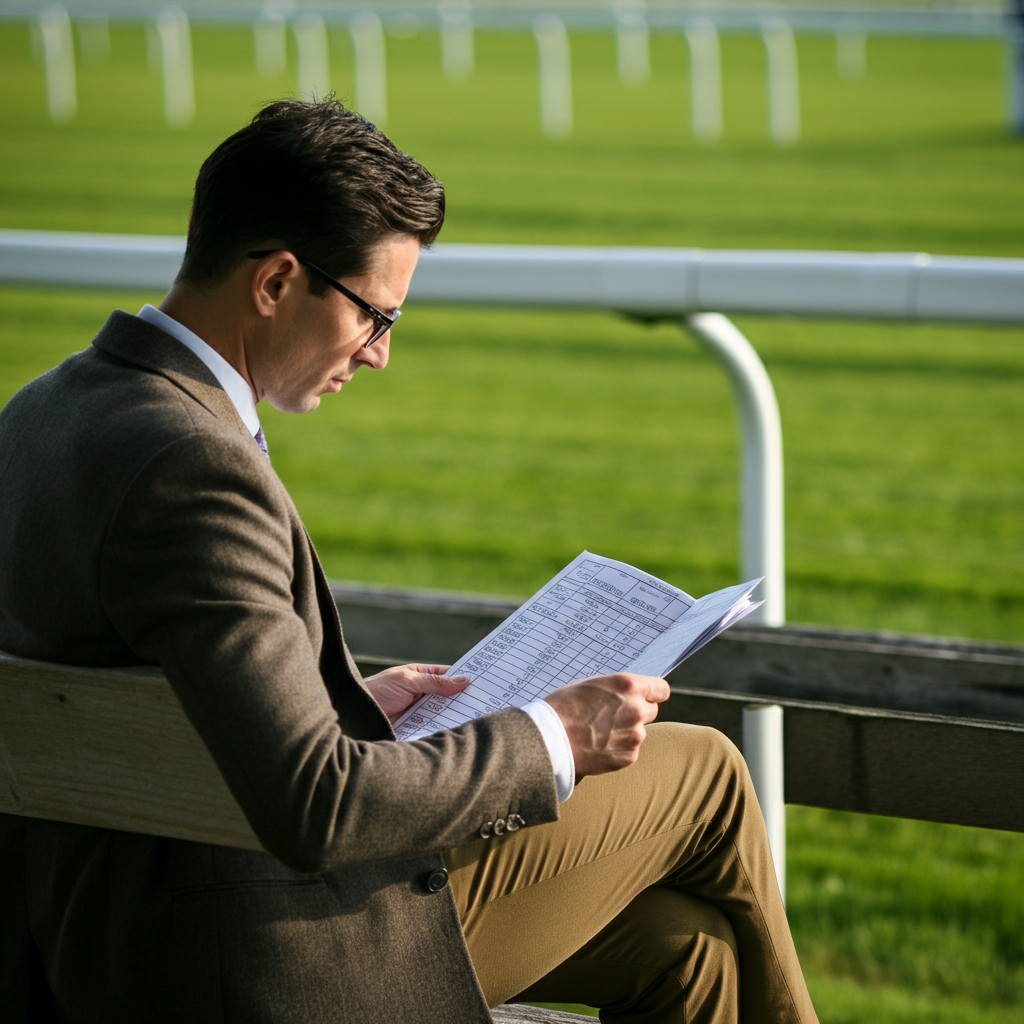Notifications

9 minutes, 17 seconds
-39 Views 0 Comments 0 Likes 0 Reviews

If you're new to horse racing, opening a racecard might make you feel like you're staring at a foreign language. Packed with numbers, abbreviations, and symbols, it can seem intimidating at first glance. But for professional bettors, a racecard is a goldmine of information that unlocks a horse's potential performance. Learning to decode it can significantly improve your understanding of the sport and, if you're betting, your chances of success.
This guide will teach you how to read a racecard like a seasoned pro. By the time you're done, you'll understand every line, every stat, and every insight the racecard offers.
A racecard is essentially a program or guide used in horse racing, packed with critical data about the day’s races, the horses, and the jockeys. Think of it as a bettor’s cheat sheet, providing detailed insights into each horse's past performances, pedigree, and suitability for the conditions of the race.
For cheval turf fans and enthusiasts of platforms like Observateur du Turf, understanding a racecard is an indispensable skill. The information within it can form the foundation of your betting strategy, helping you make informed decisions rather than leaving your wagers to chance.
Racecards often look complex, but once you learn what each section means, it becomes much simpler. Here's a breakdown of the key components you'll encounter.
At the top of the card, you’ll find essential information about the race itself. This typically includes:
The race name often hints at its prestige, sponsor, or history. The class, on the other hand, reveals the quality of the competition. For example, a Class 1 race is the highest level, while Class 6 features more modest contenders. For platforms like Observateur du Turf, class information helps predict which horses are stepping up or down in competition.
The race distance is crucial. Sprinters excel at short distances (e.g., five furlongs), while stayers perform better in longer contests. Always notice the distance to understand a horse’s optimal race conditions.
The going, or track condition, describes the surface hardness (e.g., firm, soft, heavy). This can hugely impact a horse's performance, as some specialize in wet tracks and others excel on firm surfaces.
Below the race details, you’ll find individual data for each horse. Here's how to interpret it like a pro:
Each horse is assigned a unique race number, which also corresponds to its saddlecloth. The name might also include sponsorship or owner details.
The allocated weight a horse will carry (including the jockey and saddle) is displayed in stones and pounds (e.g., 10-02). Horses carrying heavier weights face greater challenges, although talented contenders can often overcome this disadvantage.
Next to the name, you’ll see the horse’s age and sex (e.g., 5g for a 5-year-old gelding or 4f for a 4-year-old filly). Horses in their prime age (4-6 years) often outperform their younger or older counterparts.
Directly next to the horse’s name, you'll often notice a string of numbers such as "213-45." These refer to the horse's recent race results, with the most recent result appearing last:
- Numbers (1-9): Finishing position.
- "0": Finished outside the top nine.
- "P": Pulled up, didn’t finish.
- "F": Fell.
- "-": Denotes results from a previous season.
- "/": Indicates a significant gap between seasons.
Pro bettors on Observateur du Turf use form figures to identify horses in excellent shape or those on the decline.
The listed jockey can play a critical role in a horse's performance. Experienced jockeys with strong records often attract more attention. For instance, if you notice Rachael Blackmore or Frankie Dettori listed, you might want to pay closer attention.
Professional bettors always look for patterns in a trainer’s past performance, especially at specific tracks or with certain horses. Trainers with excellent win rates or a history of success in certain conditions can provide added confidence for your bets.
Most racecards will also feature industry-standard ratings assessed by handicappers or organizations like Timeform. These ratings reflect the horse’s ability relative to its competition, often marked out of 100. The higher the score, the more capable the horse is considered.
Odds show what you stand to win on a bet and indicate market expectations for each horse. Favorites typically have shorter odds (e.g., 2/1), while outsiders feature longer odds (e.g., 20/1). However, professional bettors often use odds to identify “value” bets for horses whose odds seem higher than they should be based on form and other indicators.
Now that you can read a racecard, here are tips to maximize its value in betting:
Look beyond recent results and consider the context of each performance. Did the horse have a poor run due to unfavorable conditions? Did it finish fast, hinting at untapped potential? Platforms like Observateur du Turf offer expert analysis of form figures, helping bettors dig deeper into the data.
Always compare each horse’s past performance with the current race distance, going, and class. Horses suited to these conditions are strong contenders.
Monitor winning combinations of jockeys and trainers. A robust partnership often leads to consistent performance.
Don’t always back the favorite. Look for value bets among the mid-tier horses offering attractive odds relative to their potential for success.
Even the best bettors can make mistakes. Here are a few to steer clear of:
Learning to read a racecard takes practice, patience, and a willingness to look deeper into horse racing analysis. Whether you’re following online platforms like Observateur du Turf or attending a day at the races, the ability to decode the data on a racecard will give you a significant edge in understanding the sport and making informed bets.
Your next steps? Start simple. Pick a race or two, study the racecards, and observe how outcomes align with the information provided. You’ll soon find yourself making smarter picks and enjoying the sport even more.

